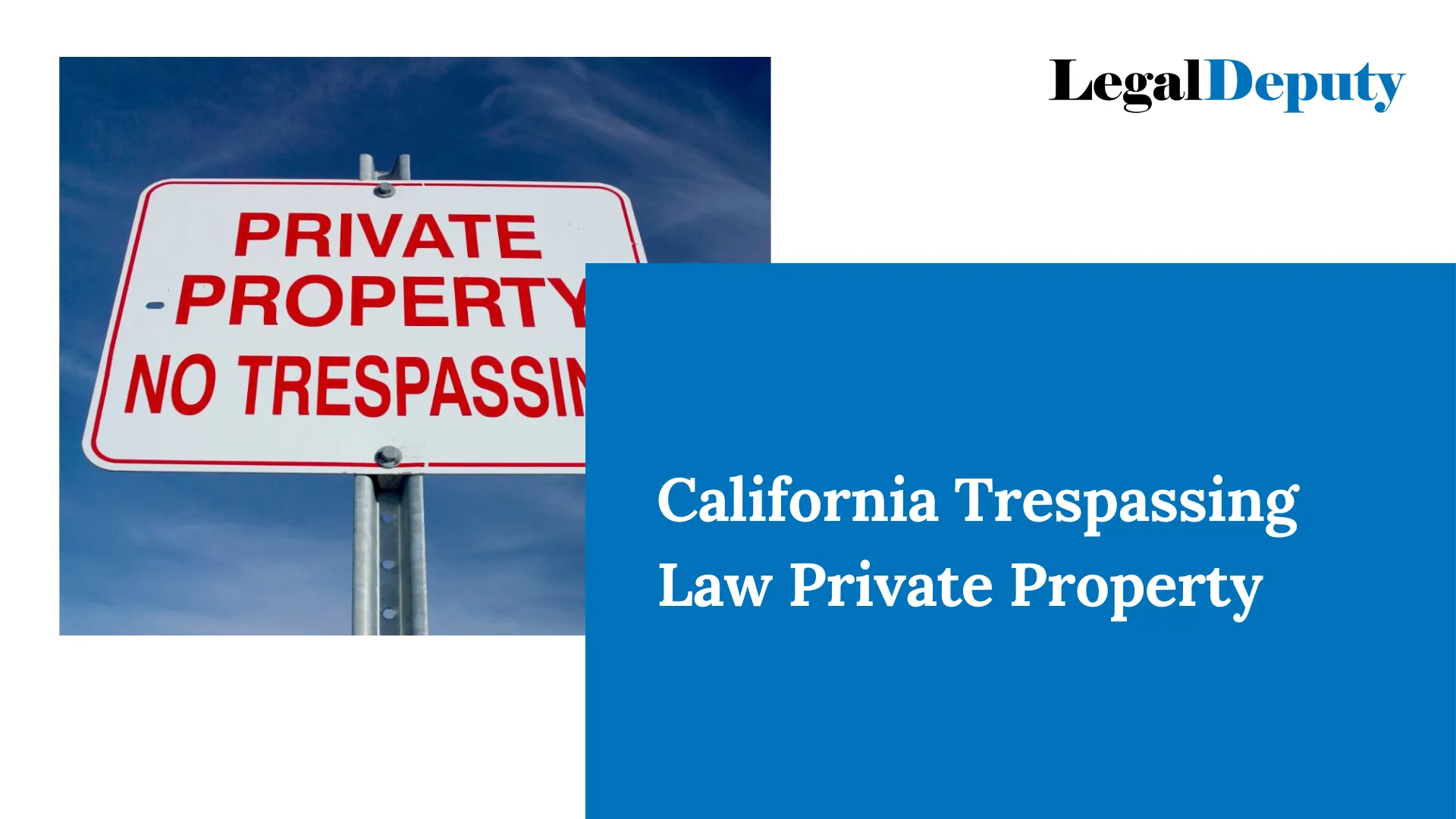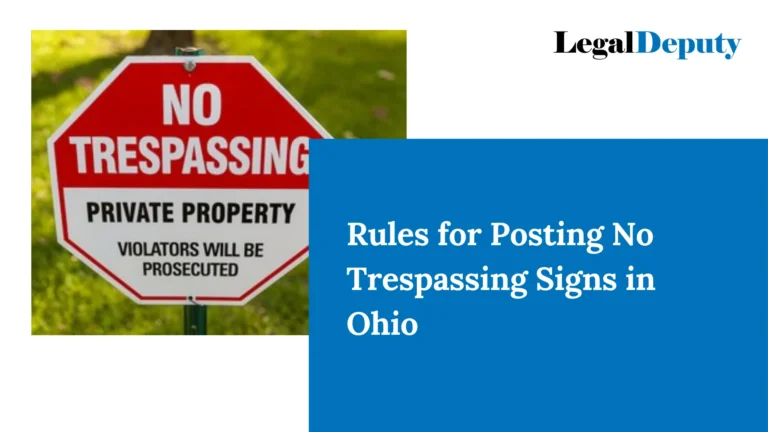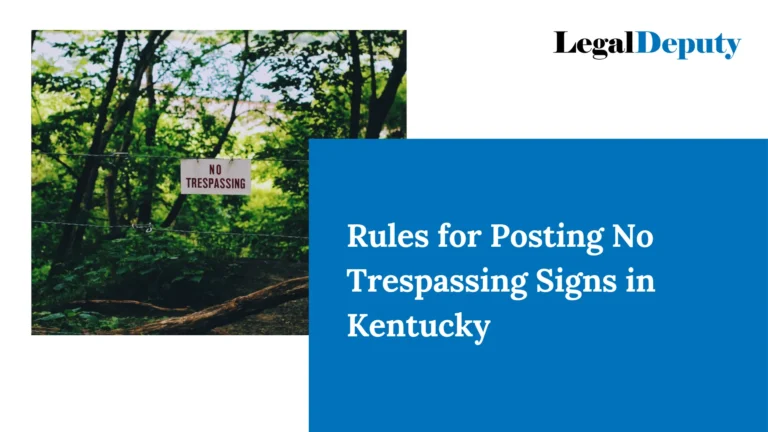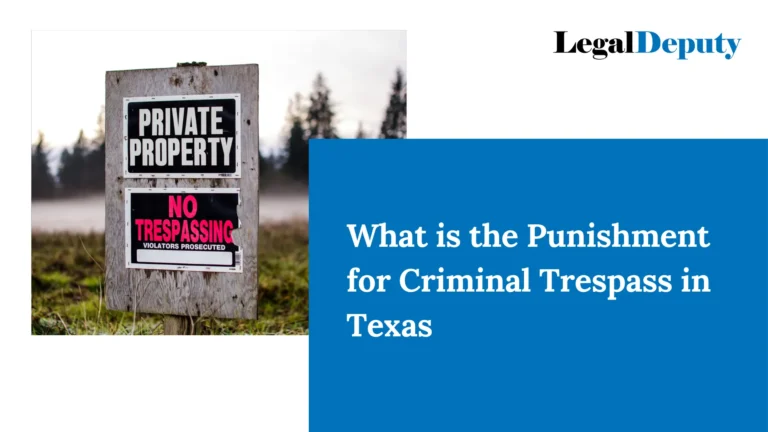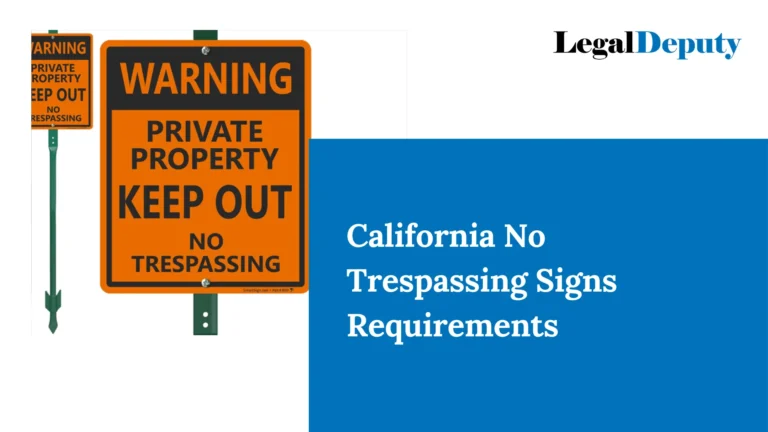California Trespassing Law Private Property – All You Need To Know
Imagine your home as a fortress, a sanctuary of peace and privacy. Now, picture an uninvited guest disrupting that tranquility. In the diverse landscape of California, understanding trespassing laws on private property isn’t just about legal jargon; it’s about safeguarding the very essence of what you call home.
As the golden state holds its own set of regulations, this guide aims to demystify the complexities surrounding trespassing, providing you with a key to protect your space.
Whether you own a sprawling estate or a cozy apartment, join us on a journey through the intricacies of California’s trespassing laws—a journey that unveils the legal nuances while shedding light on the importance of securing your domain.
Definition of Trespassing
Trespassing, in the context of California law, goes beyond mere encroachment—it’s a nuanced interplay of legal definitions and personal boundaries. At its core, trespassing involves the unauthorized entry onto another person’s private property.
This legal concept serves as a safeguard for property owners, ensuring their right to solitude and control over their land.
Civil vs. Criminal Trespass: Peeling Back the Layers
Understanding trespassing in California requires distinguishing between civil and criminal aspects. Civil trespass often involves disputes over property rights, where an individual may seek damages for any harm caused. On the criminal side, it becomes a matter of law enforcement, with potential consequences ranging from fines to imprisonment based on the severity of the offense.
Trespassing Activities: A Closer Look
Trespassing isn’t confined to physical entry alone; it encompasses a spectrum of activities that violate a property owner’s rights. From unauthorized hunting and fishing to willful damage of property, California’s legal framework aims to address various scenarios, emphasizing the importance of respecting the sanctity of private spaces.
Behind the legal jargon lies a fundamental truth—the concept of trespassing resonates deeply with our innate desire for security and personal space. It’s not just about statutes and regulations; it’s about acknowledging the emotional toll of feeling intruded upon. By delving into the intricacies of these laws, we aim to humanize the legal landscape, empowering you to navigate it with a sense of clarity and purpose.
Elements of Trespassing: Unraveling the Legal Tapestry
A. Unlawful Entry onto Private Property
Trespassing in California begins with the act of entering private property without proper authorization. Whether it’s crossing a physical boundary or passing through a marked entrance, the law emphasizes the significance of respecting the exclusivity of someone else’s domain. From sprawling estates to cozy backyards, the right to control who enters your space is a fundamental aspect protected by the legal framework.
B. Intent to Interfere with Property Owner’s Rights
The legal intricacies of trespassing extend beyond the physical act of entry. It hinges on the intent to interfere with the property owner’s rights, emphasizing the importance of recognizing boundaries and personal space. Intent matters, and understanding the underlying motivations behind trespassing activities forms a crucial component of enforcing these laws.
C. Examples of Prohibited Activities
Trespassing laws in California cover a spectrum of prohibited activities. From unauthorized gatherings and events to willful destruction of property, the legal framework aims to address a variety of scenarios. Exploring these examples not only provides clarity on what constitutes trespassing but also underscores the diverse ways in which individuals may inadvertently infringe upon the rights of property owners.
Beyond the legal technicalities, there’s a human side to these elements. It’s about recognizing the emotional impact of feeling one’s personal space violated. By unraveling the elements of trespassing, we aim to humanize the legal tapestry, offering insight into the reasons behind the laws and empowering individuals to navigate these boundaries with empathy and understanding.
Classifications of Trespass: Navigating Degrees of Offenses
California trespassing laws don’t follow a one-size-fits-all approach. Instead, they classify offenses into different degrees, each carrying its own set of consequences. Understanding these classifications is crucial for comprehending the gravity of a trespassing incident and the potential legal ramifications.
Misdemeanor vs. Felony: Grasping the Severity
Trespassing offenses in California are often categorized as misdemeanors or felonies, depending on the circumstances. Misdemeanor trespassing typically involves less severe violations, while felony trespassing implies more serious transgressions. This classification system helps determine the appropriate legal response and underscores the importance of evaluating the intent and impact of the trespass.
Penalties and Consequences for Each Degree
The repercussions of trespassing vary based on the degree of the offense. Misdemeanor trespass may lead to fines, community service, or short-term imprisonment, while felony trespassing can result in more substantial penalties, including longer jail terms. Exploring these consequences sheds light on the severity of the legal response and emphasizes the need for individuals to be mindful of the potential outcomes.
While legal classifications provide a framework for addressing trespassing incidents, it’s essential to humanize the process. Behind every legal label is a real-life situation with its unique nuances and context.
Understanding the human element of these classifications encourages empathy and fosters a sense of responsibility for one’s actions, reinforcing the idea that trespassing laws are in place to protect both property owners and the individuals involved.
Property Owner’s Rights: Safeguarding Spaces
A. Explanation of the Rights Property Owners Have
Property ownership in California comes with a set of rights designed to safeguard personal spaces. From the right to exclusive possession to the right to control access, understanding these rights is paramount. Property owners have the legal authority to determine who enters their domain, ensuring a secure and private environment for themselves and their loved ones.
B. The Role of Signage in Communicating Property Boundaries
Communication is key, and in the realm of trespassing laws, signage plays a crucial role. Property owners have the right to establish and communicate the boundaries of their space through signs. These signs serve as a visual indicator, notifying visitors of restricted areas and reinforcing the importance of respecting private property.
C. Humanizing the Right to Privacy
Beyond legalities, property owner’s rights encompass a deeply human need for security and personal space. Understanding and respecting these rights goes beyond compliance with the law; it involves recognizing the emotional impact of feeling secure within one’s home. By humanizing the concept of property owner’s rights, we empower individuals to create a sense of sanctuary within their living spaces.
D. Balancing Rights and Responsibilities
While property owners have the right to protect their spaces, there’s a delicate balance between rights and responsibilities. This section explores the ethical considerations involved in exercising these rights, emphasizing the importance of responsible stewardship and fostering a community where everyone can coexist harmoniously.
Defenses Against Trespassing Charges: Navigating Legal Grounds
A. Consent and Permission: The Power of Agreement
One of the primary defenses against trespassing charges lies in consent and permission. If a property owner grants permission for entry, the act becomes lawful. This section explores the importance of clear communication and mutual agreement, emphasizing the significance of respecting property boundaries while fostering positive relationships within communities.
B. Mistaken Identity or Lack of Intent: Unraveling Circumstances
Sometimes, trespassing incidents occur due to misunderstandings or mistaken identity. Exploring the defense of mistaken identity delves into the importance of context. Whether it’s a lost hiker unintentionally crossing into private land or a neighbor accidentally wandering onto another’s property, understanding the circumstances allows for a more nuanced evaluation of the intent behind the alleged trespass.
C. Legal Implications of Self-Defense: Balancing Safety and Boundaries
In certain situations, individuals may find themselves trespassing out of necessity for self-defense. This section explores the legal implications of self-defense as a defense against trespassing charges. Understanding when and how self-defense applies sheds light on the complexities of navigating personal safety and property boundaries in a legal context.
D. Humanizing Legal Defenses: Empathy in the Legal Landscape
Behind every legal defense is a human story. By humanizing the legal process, we aim to emphasize that defenses against trespassing charges aren’t just about legal technicalities—they involve real people facing real situations. Whether it’s a miscommunication, a genuine mistake, or a need for personal safety, exploring these defenses underscores the human element within the legal landscape.
Reporting Trespassing Incidents: Navigating Legal Channels
A. Steps Property Owners Can Take When Trespassing Occurs
When faced with a trespassing incident, property owners have various legal avenues to pursue. This section outlines the steps they can take, including documenting the incident, gathering evidence, and notifying the authorities. By empowering property owners with knowledge, we aim to facilitate a proactive approach to addressing trespassing and maintaining a secure living environment.
B. Involving Law Enforcement and the Legal Process
Reporting trespassing incidents often involves engaging with law enforcement and navigating the legal process. From filing police reports to providing testimonies, this section provides insights into the steps property owners can take to ensure that the appropriate authorities are aware of and address the trespassing incident. Understanding the legal process enhances the effectiveness of reporting and contributes to maintaining a sense of security within communities.
C. Humanizing the Reporting Process: Empathy and Community Support
Behind every trespassing incident is a property owner navigating a range of emotions, from frustration to concern. By humanizing the reporting process, we acknowledge the impact of these incidents on individuals and communities. Encouraging empathy within communities fosters a supportive environment where neighbors look out for one another, reinforcing the importance of reporting trespassing incidents not just as a legal obligation but as a shared responsibility for community well-being.
D. Balancing Legal Action and Community Cooperation
While legal action is a crucial aspect of addressing trespassing incidents, this section explores the importance of balancing legal processes with community cooperation. Establishing open lines of communication among neighbors and fostering a sense of community awareness can contribute to preventing future trespassing incidents. By humanizing the reporting process, we encourage communities to work collaboratively in maintaining the safety and security of their shared spaces.
Recent Legal Developments: Navigating Changes in California Trespassing Laws
A. Updates on Any Recent Changes or Additions to California Trespassing Laws
The legal landscape is dynamic, and understanding recent developments is crucial for staying informed. This section provides insights into any recent changes or additions to California’s trespassing laws. From legislative updates to court decisions, staying abreast of these developments ensures that individuals and property owners are equipped with the latest information to navigate the legal terrain.
B. Case Studies or Examples to Illustrate Practical Applications
To humanize the impact of legal developments, this section includes case studies or examples that illustrate the practical applications of recent changes in trespassing laws. Real-world scenarios help individuals grasp the nuances of legal updates and understand how these changes may affect their rights and responsibilities as property owners. By contextualizing legal developments, we aim to bridge the gap between legal language and everyday experiences.
C. Humanizing Legal Knowledge: Empowering Individuals with Context
Legal developments may seem abstract, but they have tangible implications for individuals and communities. This section humanizes legal knowledge by providing context for recent changes. Whether it’s a clarification of property boundaries or a new provision for certain situations, understanding the real-world impact empowers individuals to navigate the legal landscape with confidence and awareness.
D. Encouraging Continuous Learning and Adaptation
In a world of evolving laws, this section encourages a mindset of continuous learning and adaptation. By staying informed about recent legal developments, individuals can proactively adjust their practices and policies to align with the current legal framework. This not only ensures legal compliance but also fosters a sense of community responsibility in adapting to the changing legal landscape.
Conclusion
As we conclude this exploration of California’s trespassing laws on private property, the essence remains clear: knowledge is the key to safeguarding spaces and empowering communities. Understanding the legal intricacies, from the definition of trespassing to recent developments, provides a foundation for maintaining security and respecting boundaries.
Remember, these laws aren’t just about regulations; they’re about the people and the communities we build. By humanizing legal knowledge, we encourage empathy, responsible stewardship, and a sense of shared responsibility. Your home is more than just a physical structure—it’s a sanctuary.
As the legal landscape evolves, stay informed, adapt, and foster open communication within your community. Whether you’re a property owner protecting your space or an individual navigating shared environments, this knowledge empowers you to contribute to a harmonious living experience.
Together, let’s create spaces where rights are respected, boundaries are understood, and communities thrive.
Disclaimer
The content provided on this blog is intended for informational purposes only and should not be construed as legal advice. While we strive to offer accurate and up-to-date information, the legal landscape is dynamic, and regulations may vary.
Reading this blog does not establish an attorney-client relationship, and the information presented should not be considered a substitute for professional legal counsel. Legal situations are unique, and the application of laws can vary based on specific circumstances.
It is advisable to consult with a qualified legal professional for advice tailored to your individual needs and concerns. Reliance on any information provided on this blog is solely at your own risk. We do not assume any liability for inaccuracies, errors, or omissions in the content.
We encourage readers to verify the information independently and seek legal advice from licensed professionals for their specific legal inquiries. Remember that laws can change, and what may be applicable today might not be tomorrow.
Thank you for understanding the limitations of the information provided here.

